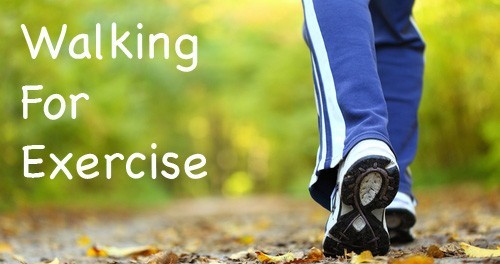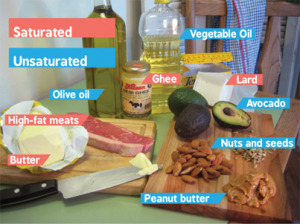Walk Talk Series
Day 35 – Cross-Training and Fats
Goal Review
At the end of the fifth week, review the goals you set in week one. Have you achieved any milestones? Do you want to revise your goals or timeline? What has helped you stay with it so far?
Rest Day. Or go for a swim!
Cross-Training: Swimming
Swimming is excellent exercise. With a variety of strokes you can tone many different muscle groups.
Swimming and doing water aerobics are also good ways to rehabilitate from injuries.
Lose Body Fat in the Pool
A pool might not be the first place you think of going when you’re looking to shape up and slim down—but perhaps it should be. No other workout burns calories, boosts metabolism, and firms every muscle in your body (without putting stress on your joints) better than a swimming workout.
When researchers at Indiana University compared recreational fitness swimmers with non-swimmers, they found that swimmers of all ages had more lean muscle and trimmer waists and hips.
And while swimming may not offer the lace-up-your-shoes-and-go convenience of running, all you need are three key items—swimsuit, cap, and goggles—and you’re set to hit the water. So go ahead: Make a splash with one of the best workouts for women! 
Why Water Works
The body-shaping benefits of swimming workouts are the result of a perfect storm of calorie burn and muscle recruitment. An easy swim burns around 500 calories an hour, while a vigorous effort can torch almost 700. And because water is nearly 800 times denser than air, each kick, push, and pull is like a mini resistance workout for your entire body—especially your core, hips, arms, shoulders, and glutes. So in addition to blasting calories as you swim, you build lean muscle, which ignites your metabolism so that you burn more calories once you’ve showered and dried off.
The irony is that while swimming makes you lean and mean, it’s also kind to your body. Water basically neutralizes gravity, so you become virtually weightless when immersed, giving your joints a much-needed vacation. You can swim almost every day without risking injury. And that makes swimming something you can do for your entire life—a major bonus because it can literally help you stay younger.
Understanding the Difference Between Fats – The Good, Bad and the Ugly
Triglycerides are the main form of fat in our bodies and in our diets. They provide us with energy, insulation, and protect our internal organs from damage. They also enable our bodies to metabolize proteins and carbohydrates more efficiently. Despite the many benefits triglycerides, too much in our blood circulation can cause major health problems, such as heart disease. Knowing the right fats to eat can help reduce overall cholesterol levels and help us to maintain a healthy body. Triglycerides can be further divided into the following categories:
These are considered the very detrimental to your health. They usually are solid at room temperature and are derived from animal products. When looking at their molecular structure, saturated fats contain the maximum number of hydrogen atoms (hence “saturated” with hydrogen atoms). Eating a diet high in these has been strongly correlated to heart disease.
Hydrogenated Fats
These are the worst of all the fats. Special attention should be given to eliminate all hydrogenated fats from your diet. During hydrogenation, hydrogen atoms are added back to polyunsaturated or monounsaturated fats to protect against rancidity from bacteria or air exposure. As a consequence, this process causes hydrogenated fats to become saturated fats. If a food label states the words partially hydrogenated oils among its first ingredients, that means that it contains allot of trans fats and saturated fats. These fats increase LDL levels and decrease HDL levels, which may increase your risk of heart disease.
Essential Fatty Acids
Essential fatty acids must be obtained through your diet in order to maintain the architecture of cell membranes. They are also used as a component in the production of eicosanoids, a type of hormone used by the body to help regulate blood pressure, blood clot formation, and immune function. These include omega-6 and omega-3 fatty acids, which have been linked to lowering triglyceride levels. Common sources of essential fatty acids include vegetable oils, fish, grains, seeds, and vegetables.
Monounsaturated Fats
This type of lipid lowers “bad cholesterol”, LDL, and leaves the “good cholesterol” HDL levels the same. These are usually liquid at room temperature. When looking at their molecular structure, there are two hydrogen atoms missing with a double bond between two carbon atoms replacing them. Monounsaturated fats include canola oil and olive oil.
Polyunsaturated Fats
This type of fat tends to lower both LDL and HDL levels (remember–we want to keep high levels of HDL). These are liquid at room temperature and typically have more than two hydrogen atoms missing. Polyunsaturated fats include safflower oil, sunflower oil and corn oil.
The following table shows, in grams, how much saturated, monounsaturated, polyunsaturated and trans fats are contained in 1 tablespoon of various commonly used oils and fats.
Fat (1 Tbsp) |
Saturated (grams) |
Mono- unsaturated (grams) |
Poly- unsaturated (grams) |
Trans-fat (grams) |
| Safflower Oil | 0.8 | 10.2 | 2.0 | 0.0 |
| Canola Oil | 0.9 | 8.2 | 4.1 | 0.0 |
| Flaxseed Oil | 1.3 | 2.5 | 10.2 | 0.0 |
| Sunflower Oil | 1.4 | 2.7 | 8.9 | 0.0 |
| Margarine (stick) | 1.6 | 4.2 | 2.4 | 3.0 |
| Corn Oil | 1.7 | 3.3 | 8.0 | 0.0 |
| Olive Oil | 1.8 | 10.0 | 1.2 | 0.0 |
| Sesame Oil | 1.9 | 5.4 | 5.6 | 0.0 |
| Soybean Oil | 2.0 | 3.2 | 7.8 | 0.0 |
| Margarine (tub) | 2.0 | 5.2 | 3.8 | 0.5 |
| Peanut Oil | 2.3 | 6.2 | 4.3 | 0.0 |
| Cottonseed Oil | 3.5 | 2.4 | 7.0 | 0.0 |
| Vegetable Shortening | 3.2 | 5.7 | 3.3 | 1.7 |
| Chicken Fat | 3.8 | 5.7 | 2.6 | 0.0 |
| Lard (pork fat) | 5.0 | 5.8 | 1.4 | 0.0 |
| Beef Tallow | 6.4 | 5.4 | 0.5 | 0.0 |
| Palm Oil | 6.7 | 5.0 | 1.2 | 0.0 |
| Butter | 7.2 | 3.3 | 0.5 | 0.0 |
| Cocoa Butter | 8.1 | 4.5 | 0.4 | 0.0 |
| Palm Kernel Oil | 11.1 | 1.6 | 0.2 | 0.0 |
| Coconut Oil | 11.8 | 0.8 | 0.2 | 0.0 |





